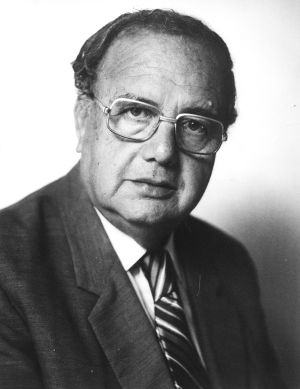Ġorġ Zammit
Clean-up Needed
The text currently on this page needs further work. It was most likely imported or reproduced from a website associated with the subject of the page - possibly through a process involving far-from-perfect machine translation, often with awkward results. It is awaiting the attention of an experienced M3P editor, which could be you. It may be slightly out of date, or may need other elements taken care of appropriately, including proofreading or copy-editing for grammar and style.
Ġorġ Zammit was born in Qormi on 17 March 1908 son Ġorġ Zammit and Ludkarda née Muscat.
The work as a writer and poet Ġorġ Zammit must remain unknown and under appreciated because of the personalities and characters that he created, together with its descriptive ability especially typical English countryside, he left photo from wonderful calling ever jsebbaħ to the environment homeland.
In the poetry of Ġorġ Zammit we find many references to English life, made with thought and feeling full, so that the poet can be seen as the man who meant everything feels and believes the Maltese
Zammit was one of the writers who produced patriotic poetry of the highest literary awareness engendered popular among the Maltese as a genus selected from the others and therefore deserves to be called a nation like any other. Zammit is also admired as a poet disingenuous to analyze recognized with greater wisdom and skill to the facts of human life to teach them and educate people.
He attended school in the Augustinian Sisters of Qormi and then attended government primary school native village. It began his secondary education at the college and in St.Flores.Paul's School from where it first came to the Lyceum and then continued at St Aloysius Jesuit College f'Birkirlara.
After matriculation continued studying at the Royal University of Malta. Whereas felt the vocation to become a priest went to Rome to continue studying at Gregorian University. Later of course left the priesthood and became a lawyer.
The life of Zammit is filled with activity. Besides the legal work is taught in English, Italian and Latin at the Lyceum. Also taught Italian literature and in Seminaries, both Malta and in Gozo, at the College of St. Aloysius and Malta was also lecturer at the Royal University of Malta. Moreover Advocate Zammit made numerous conferences in English and Italian at the University, and the British Institute in Seminaries. It says that at the time of the Second World War, Zammit made some time working as a Police Inspector.
Ġorġ Zammit married Carmelina Cuschieri and from this marriage two daughters Celine and Marquita. During his career, held several important positions, for example as President of Christian Workers Party, President of the Medical Council and was also a council member of the Academy of Malta.
Ġorġ Zammit was indeed endowed ġenjali character, always with a smile on his face, always prompt some joke and always willing to help and offer any assistance with overwhelming generosity. Man was a friend of the people and a great admirer of simplicity and beauty of creation. He was known as a man of great heart and generous - in fact been helping a number of institutes with his own money.
Although Ġorġ was oil paintings and water-color and design with a pen, to model clay and ceramic work - he himself said he was feeling the most happy when he was trapping a quiet somewhere in the countryside and portrays stand - but it was the biggest satisfaction poetry.
We know who wrote numerous poems in Maltese, English and Italian. And also wrote romance novels - most of which are two known figures 'Wenzu u Rozi praspar related to their lives and to those around. Like Anton Buttigieg, one of the most powerful elements in the poetry of Ġorġ Zammit is nature, that nature similar to God, because she creators and continues its plan over time. It is the nature of the poet, while cut from the distorted reality which lives and have a world of happiness, were reversed in the world around it continues to fulfill its mission of prophet. Nature writes Zammit which is indeed historic and survives.
Zammit does not write about fictional places that exist and describe the most clear and detailed so that can serve as a guide to anyone who wants iżurhom. But the poet not only describe, but penetrates deep to understand the mysteries of creation. In his poetry, it opens up but not with man, but with nature gives power to speak and listen. A clear example of this thinking we see in his poetry Għajn Riħana which speaks Zammit stream and calls for the rich to give him to tgħanni he can jgħanni shape.
This poem gather around an atmosphere of calm and peace, except for two verses in the l-aħħar strofa, when the poet mentions the war that was started precisely in the same year when he wrote this poem Zammit (1939). The description of the stream, water overturns on the rocks and among the greenery, is picturesque to the last. But the poet's purpose was not only to paint a picture, but that puts the calm and joy brook contrast with the sadness of the human performance
Ġorġ Zammit considered traditional poet and one Maltese romantic poets. Among the works published find Lyrical Moments (poems in English) and Adrifts, Wenzu u Rożi u ħrejjef Oħra, Mela Darba (short novels in two books), Fuq Ġwienaħ il-Għana (first poems in Maltese), Ix-Xħud li ma Deherx (romance historical background).
Advocate Ġorġ Zammit died on 21 July 1990 and is buried in the cemetery of Sorrows
